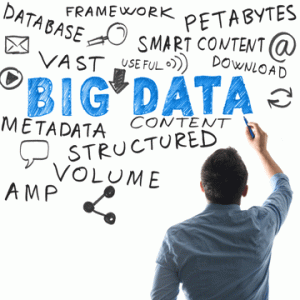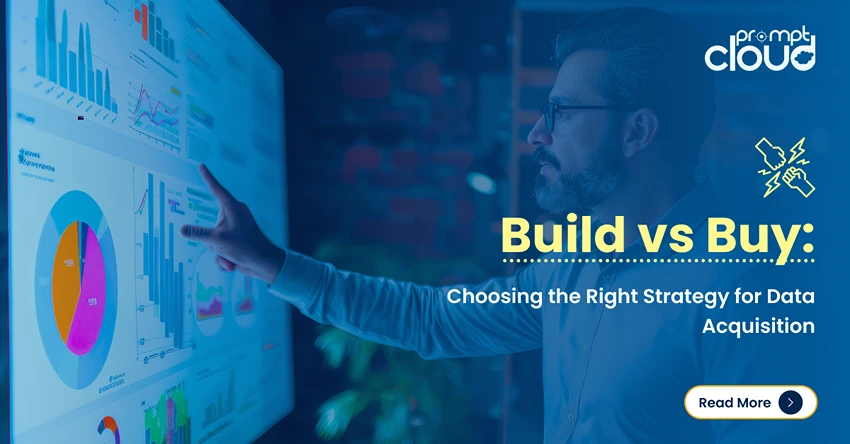Big Data has been a rage amongst large organisations for the last few years. The primary objective of Big Data analytics is to facilitate companies in making informed business decisions by capturing, curating, managing and processing huge amounts of data. Essentially, big data helps organizations discover hidden patterns, market trends, unknown correlations, customer preferences and other vital business information. This is done with the help of advanced technology and tools that can manage and analyse this data.
With the key findings from analytics, a company is in a better position to make informed decisions on effective marketing, better customer service, new revenue opportunities, improving operational efficiency and get a competitive advantage over its competitors.
Untapped opportunities and greater management attention
Many Fortune 500 companies are waking up to the importance of enterprise data as a strategic business asset. Modern Internet-driven companies like Facebook, Yahoo, eBay and LinkedIn have been at the forefront of the Big Data ‘revolution’ using Hadoop technology. Surprisingly, despite the benefits, 85% of Fortune 500 organizations are not yet in a position to exploit big data for competitive advantage through 2015, according to Gartner. This represents the size and scale of the Big Data opportunity as it is far from being saturated anytime in the near future.
High on the agenda at the highest echelons in companies, Big Data gets significant management bandwidth due to the impact it has opened up for companies to expand and grow their businesses or optimise their operations. Perhaps the greatest challenge for managements is how to effectively manage Big Data and leverage data analytics to derive actionable intelligence that will make a difference to their businesses. Without such an ability, organisations run the risk of drowning in a flood of information or wasting valuable time and resources searching for the proverbial needle in a haystack.
While Big Data’s surge in popularity could be traced back to 2012, only after its accessibility through SQL-on-Hadoop, did it truly capture the kind of attention that it commands today. In 2014, the addition of YARN and Spark made it far-more versatile. This year-2015- is predicted to be the year when we will see Hadoop really mature.
Here are some interesting forecasts related to different aspects of the Big Data and Analytics space made by various organisations closely monitoring this field.
- Rich media analytics predicted to at least triple in 2015. Video, audio, & image analytics expected to emerge as the key driver for big data analytics investment.
- Decision management platforms expected to grow at a CAGR of 60% through 2019.
- Visual data discovery tools expected to grow 2.5 times faster as compared to the rest of the business intelligence (BI) market.
- Growth in applications that focus on advanced & predictive analytics, including machine learning, will speed up in 2015.
Big data and analytics market will reach $125 billion worldwide
Over the next five years the spend on cloud-based Big Data and analytics (BDA) solutions is expected to grow almost three times faster as compared to the spending for on-premise solutions, according to the International Data Corporation (IDC) web conference on the Worldwide Big Data and Analytics 2015 Predictions. 125-billion-big-data-analytics-market-in-2015/) As Robert Mahowald, program vice-president at IDC SaaS & Cloud Software research practice, puts it, “IT buyers are shifting steadily toward cloud-also and cloud-first strategies and nearly all are reconsidering their IT best practices to embrace hybrid cloud construction and operations, secure data management, end-to-end governance, updated IT skills, and improved multi-vendor sourcing.” The research firm is expecting a 11% shift of budget dollars toward cloud technologies by 2016.
Security to become the killer app
Both IDC and the International Institute of Analytics (IIA) predict security as the “killer app” for Big Data analytics. Big data technology is expected to provide a holistic and integrated security threat prediction, as it will act as a first line of defence that combines machine learning, ontology modelling and text mining.
IoT analytics to grow
This year, there will be an increase in the adoption of technology to analyze streams of events as it is applied to Internet of Things (IoT) analytics. IoT is predicted to grow with a five-year CAGR of 30%.
Need for talented and professional data scientists
Some experts opine that human analysis is quintessential to complement what computers can do. According to Yvonne Hofstetter, MD of Teramark Technologies GmbH, a Germany-based provider of big data technologies and artificial intelligence for the industrial Internet, companies, even large players, have issues with analysis and prognosis because of its high complexity. Therefore, the need for mathematicians and data scientists is bound to increase. Data scientists will begin to play a pivotal role in enabling business decisions.
New challenges for IT
According to Dan Vesset Program Vice President for Business Analytics and Big Data research, “Leading organizations are changing how they measure their operations, interactions with customers, and resource allocations. Faster access to more relevant data and constant experimentation is creating a further gap between leaders and the rest of the organizations. It is also creating new challenges for IT and business leaders tasked with their organization’s big data and analytics strategy and execution.”
Understanding objectives is essential for success
The value of big data analytics cannot be undermined as it helps companies gather vast amounts of information about their customers. However, companies are having a hard time figuring out what can be done with that data while protecting clients’ privacy. Therefore, it is primary for companies to understand their goals prior to investing in big data technologies, according to industry experts.
This point is reiterated by Ohad Hecht, managing director at emarsys APAC, a Hong Kong-based global provider of automated e-marketing solutions with headquarters in Vienna. He says, “Many companies have big data, or are starting the process of collecting data without understanding what eventually they want to achieve. What [do] they want to learn about their business, which data sets should be connected in order to translate it into information for decision makers and on what frequency should it be delivered?”
So, while companies get ready to jump on the Big Data and Analytics bandwagon this year, lured by the enormous opportunities that lie in store, it will be prudent to adopt a start-from-the-ground-up approach. Getting clear answers to the “Why” and “What” before diving headlong will be the key to achieve great success, in 2015 and beyond.























